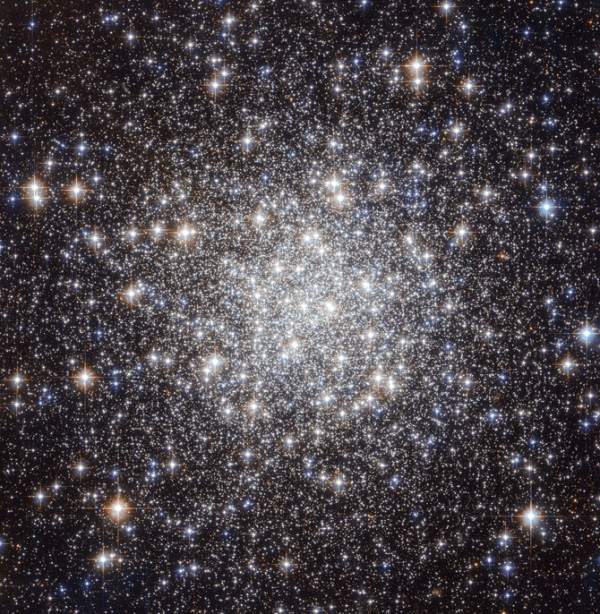NASA’s Hubble Space Telescope recently captured a stunning image of the globular cluster Messier 56.
Also known as M 56 or NGC 6779, Messier 56 is located about 33,000 light years away from the Earth in the constellation of Lyra (The Lyre). The cluster is composed of a large number of stars, tightly bound to each other by gravity.

However, this was not known when Charles Messier first observed it in January 1779. Indeed, the astronomer originally described Messier 56 as “a nebula without stars,” like most globular clusters that he discovered — his telescope was not powerful enough to individually resolve any of the stars visible here, making it look like a fuzzy ball through his telescope’s eyepiece.
Astronomers typically infer important properties of globular clusters by examining the light of their constituent stars. Nevertheless, they have to be extremely careful when observing objects like Messier 56, which is located close to the Galactic plane. To be sure, this region is crowded by “field-stars,” or, stars in the Milky Way that happen to lie in the same direction but do not belong to the cluster. These objects can contaminate the light – undermining the conclusions reached by astronomers.
A tool often used by scientists for studying stellar clusters is the color-magnitude (or Hertzsprung-Russell) diagram. This chart compares the brightness and color of stars – which in turn, helps scientists determine the approximate surface temperature of a star.
By comparing high quality observations taken with the Hubble Space Telescope with results from the standard theory of stellar evolution, astronomers can characterize the properties of a cluster. In the case of Messier 56, this includes its age, which at 13 billion years is approximately three times the age of the Sun. Furthermore, they have also been able to study the chemical composition of Messier 56. The cluster has relatively few elements heavier than hydrogen and helium, typically a sign of stars that were born early in the Universe’s history, before many of the elements in existence today were formed in significant quantities.
Astronomers have concluded that the majority of clusters with this particular type of chemical makeup lie along a plane in the Milky Way’s halo. This suggests such clusters were captured from a satellite galaxy, rather than being the oldest members of the Milky Way’s globular cluster system as had been previously hypothesized.






